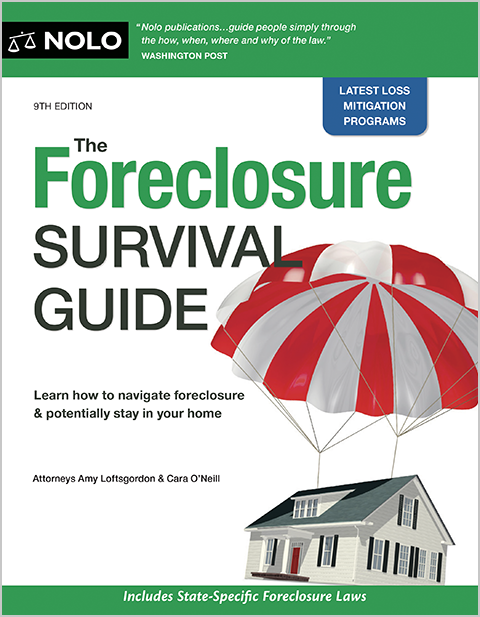Get tips on how to get a loan modification approved.
If you can't afford your mortgage payments, getting a loan modification just might keep you out of foreclosure. The investor's set of guidelines determines your eligibility for a modified loan—not everyone will qualify.
Qualifying for a modification is mostly a numbers game. The loan servicer looks at your income, loan payment, and financial circumstances to determine whether you meet the requirements for a loan modification.
But you can help or hurt your chances of getting approved for a modification with your actions (or inaction) during the process. You'll get one if you meet the program requirements and take all the necessary steps.
What Is a Loan Modification and How Does It Work?
A "loan modification" is an agreement between a mortgage holder (the loan owner) and borrower, which alters the loan terms. Usually, a modification makes the borrower's mortgage payments more affordable.
In a modification, the loan owner, called an "investor," typically agrees to one or more of the steps to reduce the monthly payments:
- lower the interest rate
- extend the loan's term (say, from 30 to 40 years)
- forgive some of the principal (not typical), or
- forbear some of the principal. (A "principal forbearance" is when the servicer sets some of the unpaid balance aside before calculating the monthly payment. This amount doesn't accrue interest and becomes due in a balloon payment, typically when the loan ends.)
Missed payments and other delinquent amounts, like late fees, are usually added to the outstanding principal balance as part of a modification. But in most cases, the investor won't approve a principal reduction as part of a first mortgage modification.
What Is the Loan Modification Application Process?
In most cases, you must submit an application, sometimes called a "borrower response package" or "loss mitigation application," to your servicer to qualify for a loan modification.
Sometimes, though, your servicer will offer a modification without this requirement. For example, Fannie Mae and Freddie Mac require their servicers to review all borrowers for a Flex Modification when the borrower is between 90 and 105 days behind in payments and send eligible borrowers a trial plan offer. So, your servicer might offer you this type of modification even if you don't apply for it.
How to Qualify for Loan Modification
Generally, you can qualify for a loan modification if you've had an income loss or reduction that caused you to miss your mortgage payments. Or you have to be in imminent danger of falling behind on payments. But you must have sufficient income to make modified payments.
You'll also have to meet other qualifications (requirements vary from investor to investor) and make payments on a trial plan. Usually, the trial plan lasts three months.
How to Get a Loan Modification
To initiate the loan modification process and find out what supporting documents, like paystubs and tax returns, you'll need to provide, get in touch with your servicer's loss mitigation department or "home retention department."
Check your monthly mortgage statement or the servicer's web page to find the contact information for this department.
Do's and Don'ts for Getting a Loan Modification
Because your actions can be vitally important in qualifying for a loan modification, you must learn the do's and don'ts of the process.
Do:
- Apply for a modification as soon as possible. Again, you'll probably have to submit a complete application to your servicer to qualify for a modification. It's best to submit your application as soon as you know you'll have trouble making your payments or shortly after you fall behind. If you take several weeks or months to complete your paperwork, a foreclosure could start or continue, leaving you with less time to work out a foreclosure alternative.
- Send in all items the servicer requests. To get protection against dual tracking under federal and some state laws, you must send your servicer a complete application. An application is complete once you've sent in everything the servicer requested—like a financial worksheet, pay stubs, bank statements, asset information, tax returns, and a hardship statement. One of the main reasons people often don't get approved for a modification is that they fail to send in every document that the servicer requests. The servicer won't make a decision on your application until all of your items are in. If you leave out just one item or send outdated paperwork, the servicer will likely deny your request for a modification.
- Be sure to include every page of each required item. When you send your paperwork to the servicer, don't omit any pages. For example, even if page three of your bank statement is blank, if the other pages say "Page 1 of 3" and "Page 2 of 3", you must send all three. Otherwise, the servicer will probably think the document is incomplete.
- Keep all correspondence you receive from the servicer. Be sure to keep all written communications you get from the servicer. For example, you'll want to hold on to a confirmation letter that the servicer received your complete application or a letter telling you that certain items are missing. This information could be useful later on if you want to challenge a foreclosure by showing the servicer didn't comply with servicing laws.
- Learn about laws that protect you in the process. Servicers sometimes make mistakes when processing borrowers' modification applications. Find out about the federal and state laws that protect you in the loss mitigation process so you can enforce your rights if the servicer fails to follow the law.
Don't:
- Send illegible documents. When you send your paperwork to the servicer, make sure that all pages are legible. Otherwise, the servicer might deem them unacceptable and deny your application. Be aware that what you consider acceptable and what the servicer considers readable might be different. The servicer won't put in a lot of effort to decipher words or numbers that are potentially unclear. It's in your best interest to make it easy for the servicer to read the documents by submitting only clear, clean copies.
- Lose your cool if the process isn't perfectly smooth. Stay calm, even if you have to resubmit the paperwork you already sent in. Resend whatever item the servicer asks for, and send it as soon as possible. If you get irritated with the servicer and insist that you already submitted all required documents rather than resending them, you'll only hurt yourself. Remember that your servicer is likely getting thousands of requests for modifications—don't give the staff an easy reason to turn down your request.
- Be afraid to get clarification. Be clear about exactly what items you need to send in. The servicer might request two pay stubs assuming that covers one month of your income. But if you're paid weekly, bimonthly, or monthly, you might have to send in more or fewer pay stubs. If you need clarification, ask your point of contact. (Under federal law, in most cases, by the time you're 45 days delinquent, the servicer has to assign a single person or a team to help you with the loss mitigation process.)
- Forget to put your name, loan number, and contact information on each page of every document you turn in. Normally, you get a few options for sending your documents to the servicer: by regular mail, by overnight mail, through an internet portal, or by secure email. Paperwork sometimes gets lost, so the best option is through secure email or an online portal. Whatever option you choose, be sure to put your identifying information on every page of each document. Otherwise, the servicer might misplace one page and think your application is incomplete. When possible, send all application documents at once, significantly reducing the opportunity for items to get lost.
- Assume everything is on track, even after you've sent in your complete application. After you send in your paperwork, remain in touch with the servicer. Call at least once weekly to check on your application status. Keep notes detailing when you called the servicer, who you talked to, and what you discussed. Also, be sure to ask if the servicer needs any updated documents or information from you.
Getting Help
Most people can apply for a mortgage modification on their own without paying for help. But if you don't understand how to complete the application or the servicer isn't responding, it might be worthwhile to get a lawyer to assist you with the process.
An attorney can also tell you about federal and state laws that protect homeowners in the loan modification process. If the servicer violates the law or treats you unfairly, you might have a defense to a foreclosure, which could give you leverage in the modification process.
To get free assistance with completing your application or to learn more about different loss mitigation options, consider talking to a HUD-approved housing counselor.
You should not, however, hire a loan modification company to assist you.

